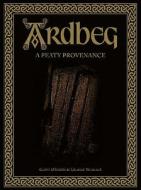
Parks in Israel
Gardens in Israel, Jewish National Fund forests and parks, National parks of Israel, Masada, Caesarea Maritima, Achziv, Lachish, Shivta, Qumran, Beit
- Editore:
Books LLC, Reference Series
- EAN:
9781155959382
- ISBN:
1155959388
- Pagine:
- 84
- Formato:
- Paperback
- Lingua:
- Inglese
Descrizione Parks in Israel
Source: Wikipedia. Pages: 82. Chapters: Gardens in Israel, Jewish National Fund forests and parks, National parks of Israel, Masada, Caesarea Maritima, Achziv, Lachish, Shivta, Qumran, Beit She'an, Tzippori, Capernaum, Tel Megiddo, Mount Tabor, Hippos, Ein Avdat, Tel Hazor, National parks and nature reserves of Israel, Khirbat al-Minya, Herodium, Beit Guvrin National Park, Makhtesh Ramon, Ramat HaNadiv, Beit She'arim National Park, Eleutheropolis, Ein Gedi, Canada Park, Al Qastal, Palestine, Tel Arad, Montfort Castle, Jezreel, Yarkon River, Arsuf, Gezer, Nimrod Fortress, Shrine of Bahá'u'lláh, Yatir Forest, Yarkon Park, Ashdod Sand Dune, Maresha, Mount Arbel, Belvoir Fortress, Wohl Rose Park, Ben-Gurion International Airport Garden, Terraces, Beit Alfa, Rosh HaNikra grottoes, Nitzana, Mamshit, Archaeological sites in Israel, Tel Be'er Sheva, Sidna Ali Mosque, Castel National Park, Ein Hemed, Garden of the King, Nahal Alexander, Island of Peace, Australian Soldier Park, Hurshat Tal, City of David National Park, Hamat Tiberias, Samaria, Israel Nature and Parks Authority, Jerusalem Forest, Neot Kedumim, Mazor Mausoleum, Ashkelon National Park, Alexandrium, Gazelle Valley, Gan HaShlosha National Park, Tel Shikmona, Migdal Afek, HaSharon Park, Ramat Gan National Park, The Garden of Mordy, Eshtaol Forest, Emek Tzurim National Park, Bar'am National Park. Excerpt: Location of QumranQumran (Hebrew: ¿, Arabic: ¿ - Khirbet Qumran) is an archaeological site in the West Bank. It is located on a dry plateau about a mile inland from the northwestern shore of the Dead Sea, near the Israeli settlement and kibbutz of Kalia. The Hellenistic period settlement was constructed during the reign of John Hyrcanus, 134-104 BCE or somewhat later, and was occupied most of the time until it was destroyed by the Romans in 68 CE or shortly after. It is best known as the settlement nearest to the caves in which the Dead Sea Scrolls were hidden, caves in the sheer desert cliffs and beneath, in the marl terrace. Since the discovery from 1947 to 1956 of nearly 900 scrolls in various conditions, mostly written on parchment, with others on papyrus, extensive excavations of the settlement have been undertaken. Cisterns, Jewish ritual baths, and cemeteries have been found, along with a dining or assembly room and debris from an upper story alleged by some to have been a scriptorium as well as pottery kilns and a tower. Many scholars believe the location to have been home to a Jewish sect, the Essenes being the preferred choice; others have proposed non-sectarian interpretations, some of these starting with the notion that it was a Hasmonean fort which was later transformed into a villa for a wealthy family or a production center, perhaps a pottery factory or similar. A large cemetery was discovered to the east of the site. While most of the graves contain the remains of males, some females were also discovered, though some burials may be from medieval times. Only a small portion of the graves were excavated, as excavating cemeteries is forbidden under Jewish law. Over a thousand bodies are buried at Qumran cemetery. One theory is that bodies were those of generations of sectarians, while another is that they were brought to Qumran because burial was easier there than in rockier surrounding areas. The scrolls were found in a series of eleven caves around t












